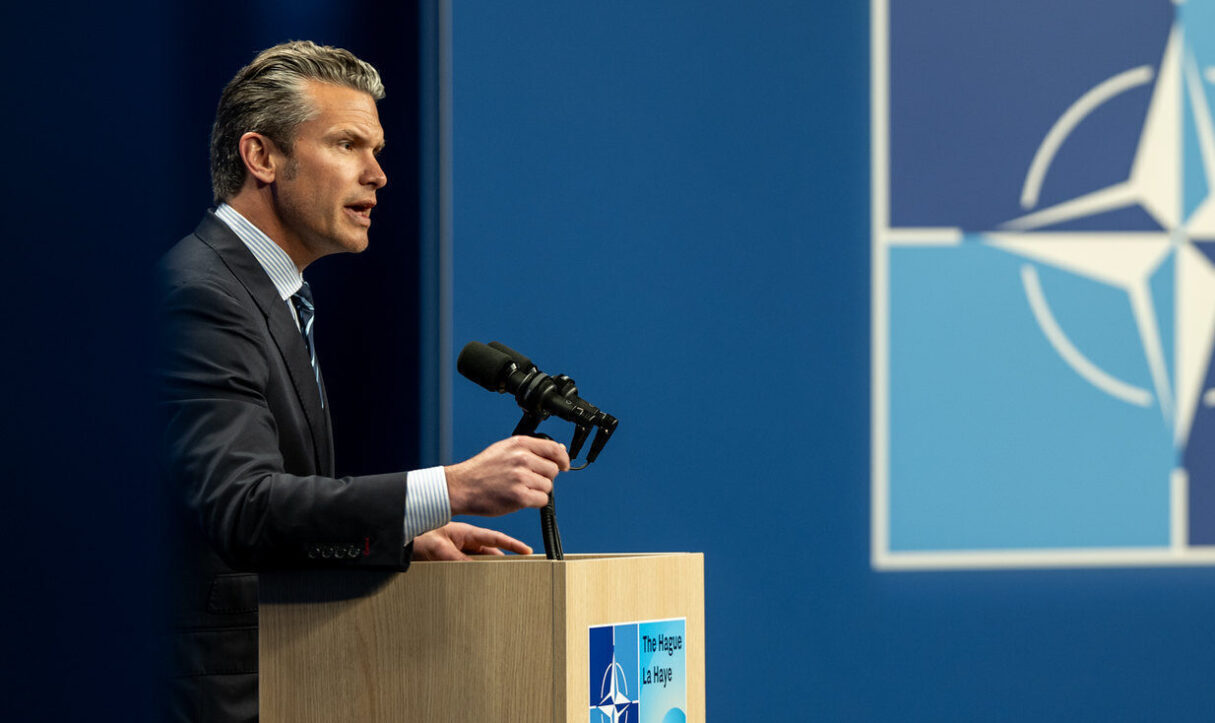At the recent annual summit of the North Atlantic Treaty Organization (NATO), US President Donald Trump pressured member states to increase their defense spending. The alliance ultimately adopted a target for member states to increase defense spending to 5% of their Gross Domestic Product (GDP) over 10 years. While this appears to be a shift in policy, it is more accurately a continuation of a trend that began on Feb. 24, 2022, when Russia launched its full-scale invasion of Ukraine. However, the rush to expand Europe’s arsenals and armies risks leaving behind one critical priority: preparedness to protect civilians if a war erupts on European soil.
Russia’s expanded war in Ukraine triggered a sweeping reassessment of security threats and readiness among European states. The EU launched a ReArm Europe/Readiness 2030 plan in March, allocating over 800 billion Euros to strengthen defense against a potential Russian aggression. Germany announced a historic turning point just three days after the invasion, creating a special defense fund projected to reach $100 billion. Poland has raised its defense spending from 2.7% of GDP in 2022 to 4.2% in 2024, aiming for 5% in 2026 — well ahead of NATO’s 10-year target. Other European countries, including Estonia, Latvia, Lithuania, and Finland, have also significantly expanded their defense budgets.
President Trump’s wavering commitment to supporting Ukraine, along with his lukewarm stance toward NATO, has only deepened European urgency to bolster their own military capabilities. The recent NATO summit succeeded in breathing new life into these existing efforts.
For decades, NATO and European nations engaged in counterterrorism operations gradually recognized the strategic and legal imperative of protecting civilians and minimizing harm by codifying these protections into doctrines and training. However, they have yet to effectively translate protection tools tested in counterterrorism to large-scale wars between military powers.
Civilian harm tracking systems, which help military planners make decisions about upcoming military operations to minimize civilian harm — relatively successful in counterterrorism settings – have yet to be operationalized for high-intensity combat. Ukraine piloted such a system in 2019 but largely abandoned it in 2022 as the demands of full-scale war overwhelmed resources. Existing tools like no-strike lists and battle damage assessments remain insufficient to fully assess and mitigate civilian risks in densely populated areas.
Preparedness also requires realistic training. NATO and European training exercises include civilian protection often as a peripheral concern rather than a core operational element. The war in Ukraine underscores why this must change.
Ukraine’s Armed Forces have actively operationalized NATO’s civil-military doctrine since 2015. Their civil-military coordination (CIMIC) units have built greater trust between the armed forces and the population, leading to improved resilience. In contrast, many European civilians have minimal interaction with their militaries and, as such, may less likely heed their advice during crises. CIMIC officers in Ukraine have also played a key role in helping the Ukrainian military understand the civilian environment and respond to civilian protection concerns.
More than 46,000 civilians have been confirmed killed or injured since Russia’s invasion, with actual numbers likely far higher. Most deaths resulted from indiscriminate shelling of urban areas. Air defense systems, shelters, and evacuations have been vital in saving civilian lives. Ukrainian officials assessed shelter and evacuation preparedness in Ukraine as adequate just prior to the full-scale invasion. Both proved unfit for purpose when fighting began. Evacuation planning and response have since improved through joint efforts of the government, the military, civil society and Ukraine’s international partners.
Most deaths resulted from indiscriminate shelling of urban areas.
Access to reliable information has been crucial to communities, but disinformation spread on social networks at a local level, especially about evacuations, has endangered civilians. High public trust in the Ukrainian military has allowed it to counter such disinformation effectively, preventing potential harm to civilians.
Civilians have also mobilized at a grassroots level, developing applications that warn of air strikes and Russian troop movements. While the latter also helped bolster Ukraine’s military operations, it has exposed civilians to targeting by Russian troops.
Many European defense plans often assume civilians will support the military efforts, yet they must also communicate clearly the risks civilians face under international humanitarian law when doing so.
NATO member states should ensure that investments in military capabilities include protection of civilians as a core component of readiness and resilience. This requires resolving tensions among the different protection frameworks used by NATO members and developing clear, common protection tools, plans, and responsibilities. When defense plans assign roles to “active civilians” in defense activities, they must also include processes to anticipate and mitigate the risks civilians face by participating.
Building and professionalizing CIMIC capacity can strengthen communication between militaries, civilians, and authorities, grounding operations in a better understanding of the civilian environment. And as NATO militaries expand their ability to detect and respond to adversary information operations, they should also address disinformation at the community level that threatens civilian safety, not just narratives that undermine strategic goals.
To better protect civilians, governments must invest now in shelters, air-alert systems, and evacuation plans that are regularly rehearsed under realistic conditions. Military exercises should reflect the reality that many civilians may remain trapped in conflict zones, underscoring the urgency of integrating protection of civilians’ considerations into operational training. As NATO and European states ramp up defense spending, this is also a critical moment to build robust civilian harm tracking systems for large-scale combat operations, helping militaries spot patterns and prevent harm before it occurs. Without these measures, the risks to civilians will be too high in potential future wars in Europe, with potentially devastating consequences and prolonged suffering.




















